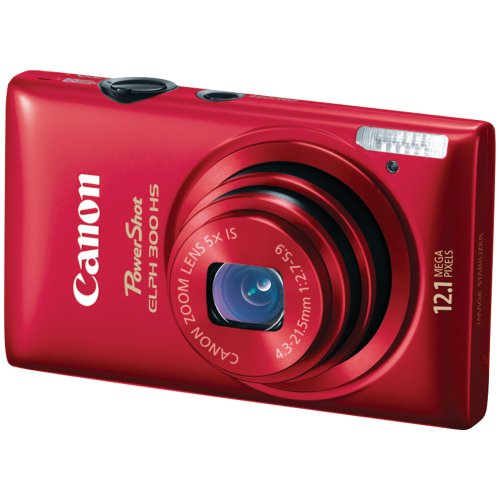Great Price Canon 6473A003 for $135.00
Canon EF 75-300mm f/4-5.6 III Telephoto Zoom Lens for Canon SLR Cameras Review
Sale Price : $135.00
Canon EF 75-300mm f/4-5.6 III Telephoto Zoom Lens for Canon SLR Cameras Feature
- 75-300mm telephoto zoom lens with f/4-5.6 maximum aperture for Canon SLR cameras
- Improved mechanism makes zooming smoother; front part of zoom ring sports silver ring
- Measures 2.8 inches in diameter and 4.8 inches long; weighs 16.8 ounces; 1-year warranty
- 4.9-foot closest focusing distance; 32- to 8-degree diagonal angle of view
Canon EF 75-300mm f/4-5.6 III Telephoto Zoom Lens for Canon SLR Cameras Overview
Canon EF 75-300mm f/4-5.6 III Telephoto Zoom Lens.Canon EF 75-300mm f/4-5.6 III Telephoto Zoom Lens for Canon SLR Cameras Specifications
Capture the far-off action of fast-paced sports or zoom in for an intimate portrait with the Canon EF 75-300mm telephoto zoom lens. The optical system, construction, and exterior are the same as the EF 75-300 mm f/4-5.6 III USM’s. The difference is that it uses a DC motor instead of a USM to drive the AF. As with all Canon lens, this 75-300 model carries a one-year warranty.- Focal length: 75-300mm
- Maximum aperture: 1:4-5.6
- Lens construction: 13 elements in 9 groups
- Diagonal angle of view: 32 (at 11 feet) to 8 degrees (at 15 feet)
- Closest focusing distance: 4.9 feet
- Zoom system: Rotating type
- Filter size: 58mm
- Dimensions: 2.8 inches in diameter, 4.8 inches long
- Weight: 16.8 ounces
Available at Amazon.com Check Discount Price Now!
Related Products
- Canon EOS Rebel T2i 18 MP CMOS APS-C Digital SLR Camera with 3.0-Inch LCD and EF-S 18-135mm f/3.5-5.6 IS UD Standard Zoom Lens
- Canon EF-S 55-250mm f/4.0-5.6 IS Telephoto Zoom Lens for Canon Digital SLR Cameras
- Tiffen 58mm UV Protection Filter
- Canon Pixma PRO9500MkII Inkjet Photo Printer (3298B002)
- Canon EOS Rebel T3i 18 MP CMOS Digital SLR Camera and DIGIC 4 Imaging with EF-S 18-55mm f/3.5-5.6 IS Lens
Customer Reviews
*** Product Information and Prices Stored: Nov 22, 2011 11:06:16
Canon EF 75-300mm f/4-5.6 III Telephoto Zoom Lens for Canon SLR Cameras Review
Sale Price : $135.00
Canon EF 75-300mm f/4-5.6 III Telephoto Zoom Lens for Canon SLR Cameras Feature
- 75-300mm telephoto zoom lens with f/4-5.6 maximum aperture for Canon SLR cameras
- Improved mechanism makes zooming smoother; front part of zoom ring sports silver ring
- Measures 2.8 inches in diameter and 4.8 inches long; weighs 16.8 ounces; 1-year warranty
- 4.9-foot closest focusing distance; 32- to 8-degree diagonal angle of view
Canon EF 75-300mm f/4-5.6 III Telephoto Zoom Lens for Canon SLR Cameras Overview
Canon EF 75-300mm f/4-5.6 III Telephoto Zoom Lens.Canon EF 75-300mm f/4-5.6 III Telephoto Zoom Lens for Canon SLR Cameras Specifications
Capture the far-off action of fast-paced sports or zoom in for an intimate portrait with the Canon EF 75-300mm telephoto zoom lens. The optical system, construction, and exterior are the same as the EF 75-300 mm f/4-5.6 III USM’s. The difference is that it uses a DC motor instead of a USM to drive the AF. As with all Canon lens, this 75-300 model carries a one-year warranty.- Focal length: 75-300mm
- Maximum aperture: 1:4-5.6
- Lens construction: 13 elements in 9 groups
- Diagonal angle of view: 32 (at 11 feet) to 8 degrees (at 15 feet)
- Closest focusing distance: 4.9 feet
- Zoom system: Rotating type
- Filter size: 58mm
- Dimensions: 2.8 inches in diameter, 4.8 inches long
- Weight: 16.8 ounces
Available at Amazon.com Check Discount Price Now!
Related Products
- Canon EOS Rebel T2i 18 MP CMOS APS-C Digital SLR Camera with 3.0-Inch LCD and EF-S 18-135mm f/3.5-5.6 IS UD Standard Zoom Lens
- Canon EF-S 55-250mm f/4.0-5.6 IS Telephoto Zoom Lens for Canon Digital SLR Cameras
- Tiffen 58mm UV Protection Filter
- Canon Pixma PRO9500MkII Inkjet Photo Printer (3298B002)
- Canon EOS Rebel T3i 18 MP CMOS Digital SLR Camera and DIGIC 4 Imaging with EF-S 18-55mm f/3.5-5.6 IS Lens
Customer Reviews
*** Product Information and Prices Stored: Nov 22, 2011 11:06:16
















